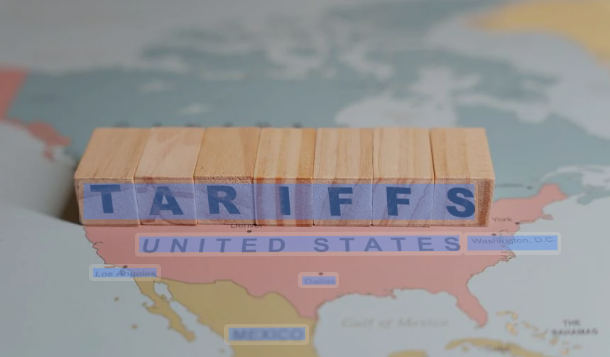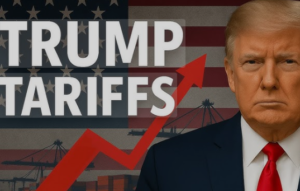
trump tariffs
trump tariffsIn recent years, few leaders have impacted global trade as controversially as Donald Trump, whose aggressive tariffs—mainly targeting China but affecting allies too—have rippled across the global economy, including emerging markets like India. This article explores the origins, goals, and ongoing effects of the trump tariffs, with a focus on India’s trade and economic policies.
What Are trump tariffs?
The Trump administration introduced tariffs in 2018 to protect U.S. industries, curb alleged unfair trade practices by countries like China, and reduce the trade deficit. Some of these tariffs included:
- The 25% tariff on steel and 10% tariff on aluminum imports (March 2018)
- Multiple rounds of tariffs on Chinese goods covering over $360 billion
- Tariffs on goods from the European Union, Canada, Mexico, and other trading partners
Intended to boost U.S. manufacturing, the trump tariffs triggered global disruptions in trade, prices, supply chains, and diplomacy.
Why Were trump tariffs Implemented?
The Trump administration set up the tariffs largely under its ‘America First’ philosophy. The rationale for the tariffs included the following:
- Reducing the trade deficit on the American side, predominantly with China.
- Protecting American jobs, bolstering domestic manufacturing.
- Punishing intellectual property theft, forcing technology transfers.
- Evening out the trade negotiations at the international level.
“The administration saw tariffs as leverage to renegotiate trade deals and push other countries to open their markets.”
Impact of trump tariffson the Global Economy
The global economy was shaken up after the trump tariffs were imposed. Many countries retaliated, resulting in retaliation trade wars, and disrupted supply chains with a long history of operations. Investors drove stock market volatility, while analysts revised global growth forecasts downward during 2018–2019.
- China slapped counter-tariffs on American goods such as soybeans and cars.
- The European Union retaliated by placing tariffs on American whiskey, motorcycles, and jeans.
- Meanwhile, Canada and Mexico instituted tariffs on U.S. steel, agricultural goods, and various other exports.
This exchange of retaliations caused cost inflation on businesses and consumers and prompted countries to look elsewhere for trading partners and supply sources.

How India Was Affected by trump tariffs
India did not become the major victim of the trump tariffs but rather was the collateral damage. The direct and indirect effects of the Trump tariffs were far-reaching in the Indian economy:
- Loss of GSP Status
In June 2019, the Trump tariff had one of its most direct implications: it resulted in the withdrawal of GSP status from India by the U.S government. Under this special trade privilege, thousands of Indian products were exported duty-free to the U.S.
Exports from India faced an increase in duties and became less viable to compete in the American market, especially textiles, jewelry, and automobile parts.
- Tariffs on Steel and Aluminum
The United States further slapped India with tariffs of 25% on steel and 10% on aluminum. Previously one of the top ten steel exporters to the U.S., India has since seen a decline in its shipments due to these tariffs.
- Greater Bilateral Tensions
Since tariffs earlier seemed to pull the India-U.S. relations toward a closer economic and strategic relationship, they strained diplomatic ties. Whereas Trump tried to get more access to India’s dairy and medical device market, India retaliated with tariffs on 28 U.S. items such as almonds and apples.
- Supply Chain Realignments
With trump tariffs disrupting U.S.-China trade, many global companies began looking to India as an alternative manufacturing hub. While this offered long-term opportunities, India had to quickly adapt its infrastructure and policies to accommodate this shift.
Opportunities and Challenges for India Post-Tariffs
The U.S. duties offered an opening for India, but with its own set of disadvantages.
Opportunities:
-
As companies diverted supply chains away from China, India gained a chance to attract foreign investment.
- Sectors like electronics manufacturing and pharmaceuticals were suddenly the hot choices across the globe.
-
India engaged in Free Trade talks with the EU, UK, and Australia to expand its export markets.
Challenges:
- Short-term disruption in exports due to the withdrawal of GSP and retaliatory tariffs.
- Domestic industries lacked the scale and ease of doing business that foreign players sought.
- The need for upgrading infrastructure at a fast pace gained prominence along with the realization for policy reforms.
Are trump tariffs Still in Effect?
As of 2025, the Biden administration has canceled some of the Trump tariffs but has kept many of the key duties imposed on Chinese goods. While the U.S. relaxed tariffs on steel and aluminum from certain allies, Trump’s protectionist stance continues to influence the overall policy framework.
High-level trade talks have begun again between India and the U.S., with rising momentum toward the restoration of GSP, or perhaps a new bilateral trade agreement.
Lessons for India
From the era of Trump tariffs, India learnt a few valuable lessons:
- Diversify Export Markets: If you become too dependent on one trade partner, then the economy becomes vulnerable to geopolitical shifts.
- Boost Domestic Manufacturing: India must ramp up competitiveness under schemes such as Make in India and PLI to become a good alternative for China.
- Trade Policy Readiness: India needs a nimble, proactive trade policy that can quickly adapt as the global landscape changes.
- Open More Diplomatic Channels: Trade can never be divorced from diplomacy. Taking the time to forge genuine and consistent engagement with one’s trading partners will help avoid such disruptions. click here
The trump tariffs marked a turning point in global trade, disrupting long-entrenched norms and forcing countries to rethink their economic strategies. Initially posing a tough challenge for certain countries such as India, long-term repercussions may have actually helped India grow more resilient and self-reliant. The further development of global trade processes will provide the stage for determining whether or not India can use the knowledge it gained during the Trump tariff times to position itself as a major global supply chain player and thereby improve its economic prospects.
Stay tuned to newsintercity.com.in for ongoing coverage of international trade, tariffs, and their bearing on India and beyond.



